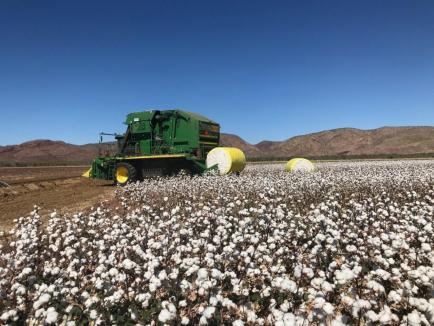Milk production in Western Australia has recovered to levels approaching those before the industry’s deregulation nearly two decades ago, a recent report has found, while the number of milk-producing farms in the state has fallen significantly.


Milk production in Western Australia has recovered to levels approaching those before the industry’s deregulation nearly two decades ago, a recent report has found, while the number of milk-producing farms in the state has fallen significantly.
WA dairy farmers produced 380 million litres of milk in the 2017 financial year, slightly below the 389 million litres level of 2000-01 when the industry was deregulated, according to the Australian Competition and Consumer Commission dairy inquiry.
That was up from as low as 319 million litres in the year to June 2008, and just less than the post-deregulation peak of 387 million litres in the 2016 financial year.
During that period, the inquiry found, the number of dairy farms in WA fell from 500 to 150.
It means average production per farm increased from less than 1 million to about 2.5 million litres, driving economies of scale.
The cost of production is still higher in WA than most other states, however, and most supply goes into the local market rather than being exported.
Local prices are still loosely linked to global prices through the east coast market, as falling international prices will mean more interstate milk flows to WA, adjusting for transport costs.
Low population growth in recent years in WA has meant milk demand has been stable.
“Stable per capita consumption of domestically consumed dairy products means processor demand for raw milk in (WA) is also relatively static,” the ACCC report said.
“Even if processors experience an increase in wholesale prices and margins, they are faced with relatively fixed demand and thus have little incentive to invest in expanding capacity.
“As such, increases or decreases in domestic retail and wholesale prices for dairy products do not affect processors’ incentives to secure more milk or defend their share of the milk pool and therefore do not influence farmgate prices in the northern and WA regions.”
One of the report’s major conclusions was that an ongoing price war among major retailers selling milk at $1 per litre had little impact of farmgate prices.
“Farm exit trends in the higher cost regions (WA and northern Australia) have not changed in response to the introduction of $1/L milk,” the report said.
“Total farm numbers, output and profitability trends have not changed since the introduction of $1/L milk (either).”
WAFarmers dairy section president Michael Partridge disagreed.
“The ACCC has failed to recognise that a reduction in the price of private label milk caused a significant decline in the value of all milk sold, essentially dragging the market down,” Mr Patridge said.
“To say $1/L milk does not or will not affect farmgate prices, especially in WA, is flawed and we are frustrated that the report has not detailed how much it costs the supply chain.”














